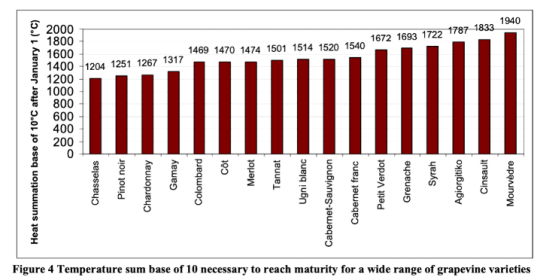What is the climate?
Moderate water stress (starting at véraison) is a climatic indicator of grape quality. A water deficit will naturally regulate the vines with regard to several physiological parameters such as vigour and sugar load. This stress corresponds to a period when the daily climatic demand, or "potential evapotranspiration" exceeds the quantity of water that can be extracted from the soil by the roots. This is mainly determined by temperature, solar radiation, relative humidity and rainfall. It can also be impacted by other factors such as soil type, grape variety, altitude (air temperature generally decreases by 1°C for an elevation of 150m) and topography.
In winegrowing, irrigation is therefore developed in semi-arid areas where it is indispensable, i.e. when the water stress is severe and risks impairing the quality of the grapes and therefore the wines in the short term and the sustainability of the vineyard in the long term. This is considered to be the case when rainfall is less than 350 mm/year. Irrigation can also be implemented when the annual rainfall is high, for example, 900 mm/year, but is concentrated in the winter period, as at Eisele Vineyard in California, where less than 100 mm falls between April and September but 600 mm falls over the rest of the year. When the useful water reserves in the soil are consistently insufficient, a system that allows for rapid replenishment of water resources may be necessary.
The availability of water to vines is not the only quality criterion, the thermal amplitude, i.e. the difference between day and night temperatures, plays the role of a second climatic indicator of quality in the grapes. These two criteria must be met in order to express the vine's best quality potential, which must be guaranteed by judicious technical itineraries, both in the vineyard and in the cellar. Irrigation alone does not solve all climate issues.


